CODE Magazine continues to publish technical “how to” and “overview” articles about current and new technologies, as we have for over 25 years with sample source code, showing new and experienced developers modern techniques for how to build software used inside companies, on mobile devices and deployed to the cloud. Join our audience of software professionals every other month.
Potential and Possibility • It’s time for another art image from your trusty editor. I like to call this the Pile of Possibility: pencils, pens, paint, Legos and crayons. These are all the tools and materials capable of endless artistic possibilities. The tools and materials of the software developer consist of code, compilers, text editors, and, every so often, a carefully chosen icon. And just like art materials, they’re capable of endless possibilities.
CODE: 10 Years Ago • In this article, I’m continuing our journey through the last 30 years of anything related to CODE. We’re starting to arrive in a reasonably modern era. In fact, when I researched some of the background information for this article, I was continuously surprised that some of these things were a decade ago. Some of the topics discussed in this article seem like they happened
Career Development and Staffing reinvented • You think great talent and cool positions only exist in Silicon Valley? Think again!
More VS Code Tips • In my previous article in CODE Magazine (https://www.codemag.com/Article/2408031/VS-Code-Tips), I shared some of my favorite tips when working with VS Code. As I wrote the article, I realized that I was just brain dumping tidbits I’ve gathered over many years of using VS Code. The list seemed endless. But what about some larger chunks of tips? Things that every developer
Exploring .NET MAUI: Styles, Navigation, and Reusable UI • In Part 1 of this ongoing series on developing an application in .NET MAUI (https://tinyurl.com/3vz3f5j7), you learned the basics of XAML, XML namespaces, attributes, and elements. You created your first .NET MAUI application and ran that application on both a Windows computer and an Android emulator. And you learned how to lay out a basic data-entry page using a Grid and Stack Layouts.
Job-Oriented Programming and Pointers in a Scripting Language • This article is about using job-oriented programming and pointers in a scripting language. As a scripting language, we’ll use CSCS (Customized Scripting in C#). This is an easy and a lightweight open-source language that has been described in previous CODE Magazine articles: https://www.codemag.com/article/1607081 introduced it, https://www.codemag.com/article/1711081
CODE Magazine Presents: The State of Al Mini Conference Tour
Container Orchestration Using Kubernetes • In my previous article on Docker ("Introduction to Containerization Using Docker," Mar/Apr 2021 issue), I explained what containerization is and how Docker simplifies application deployment. Docker has revolutionized software development, deployment, and management, especially in the context of microservices. In the realm of microservices, Docker plays a crucial
Implementing the Outbox Pattern with Kafka and C# • The outbox pattern is a proven and scalable software design pattern often used in a distributed environment to publish events reliably and enforce data consistency. This article presents an overview of the outbox pattern and examines how it can be implemented using Kafka and C# in ASP.NET Core applications. If you’re to work with the code examples discussed in, this
Semantic Kernel Part 3: Advanced Topics • In the first article of this series, Semantic Kernel 101 in the January/February 2024 issue of CODE Magazine (https://codemag.com/Article/2401091/Semantic-Kernel-101), I gave an overview of the concepts of Semantic Kernel (SK), Microsoft’s Framework for working with Large...

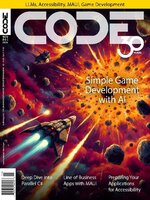 Nov/Dec 2024
Nov/Dec 2024
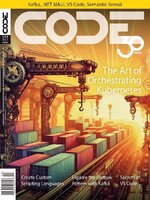 Sep/Oct 2024
Sep/Oct 2024
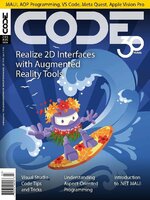 Jul/Aug 2024
Jul/Aug 2024
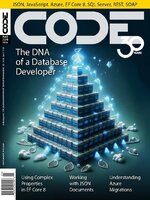 May/Jun 2024
May/Jun 2024
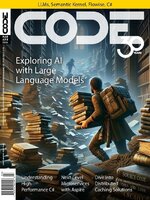 Mar/Apr 2024
Mar/Apr 2024
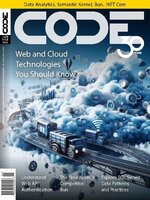 Jan/Feb 2024
Jan/Feb 2024
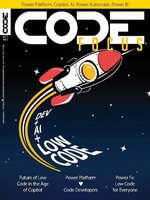 Power Platform
Power Platform
 Staffing
Staffing
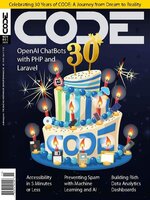 Nov/Dec 2023
Nov/Dec 2023
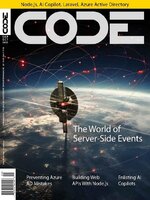 Sep/Oct 2023
Sep/Oct 2023
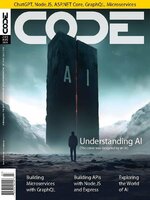 Jul/Aug 2023
Jul/Aug 2023
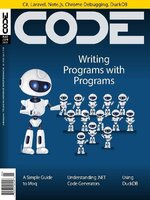 May/Jun 2023
May/Jun 2023
